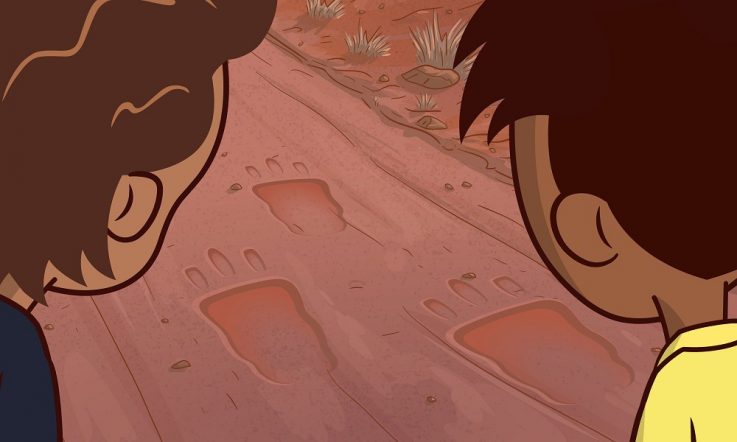Little J & Big Cuz is a Logie award-winning animated children's series that follows two Aboriginal children who live with their nanna and lovable dog. The 13 episodes explore the unfamiliar world of school and how, with the help of their teacher Miss Chen, Little J and Big Cuz navigate their first years of school life. In this regular blog, Miss Chen will be sharing some of the F-2 resources she's been using in her classroom, which are all available to download for free via the Little J & Big Cuz website.
Hi, my name is Miss Chen and I am a primary school teacher. Teaching is one of my greatest passions in life. In fact, my goal is to have my students enjoy school as much as I do! I'm the only teacher in my school so I have to work hard to ensure my F-2 program is dynamic and based around the children's interests.
While my father was born in South East Asia, my mother's family have been in Australia for generations. My mum taught me a lot about the land and the importance of Aboriginal culture, but I still have lots to learn, which is why I love working closely with Indigenous elders and other families in my community.
On this blog I'll be sharing some of the exciting resources I've been using in my classroom that are all free to download on the Little J & Big Cuz educator resource page.
In today's activity the students are learning all about journeys and creating their own memory maps.
This week the class have been discussing all things transformation. I asked the students to think about a time in their life when they've gone on a journey of some sort – moving house, changing towns, going on a holiday or emigrating from or to a different part of the world.
I asked the students to visualise what their previous ‘place' was like, including what their house, their room, the street, their friends, and their school looked like. Once they began sharing their stories, it became clear that all the students have a wealth of different experiences, so the conversations were rich and diverse.
Once each child had the opportunity to share their story, we then used Google Maps to find where they had previously lived or travelled. We practiced how to manipulate the size of the map to see how the map represents the distance between the site of our school, and the place they had previously lived or visited.
This activity was a really good opportunity to introduce the words ‘scale', ‘compass', ‘points', ‘lines', ‘latitude' and ‘longitude' into their vocabularies. We discussed what each of these things are and how they help us to use maps in our everyday lives.
From here, we shifted focus and students began working on their own memory maps of their journey, displaying how you get from one place to another. The students were instructed that they could use any iconography pertaining to mapping or create their own codes and symbols to represent their journey.
I was conscious of the fact that some students who have experienced past trauma may find developing a memory map difficult, so I had planned to adapt the activity as required. But all students managed this activity with ease, so we used the opportunity to have students share their stories with the others in class, and then we displayed the work.
To conclude the lesson, we read Alison Lester's Are we there yet? which recounts a family's journey around Australia. The students loved hearing the names of specific places they had visited themselves, including Kakadu, Mount Isa and Eucla.
The resource mentioned in this blog post is directly related to Little J & Big Cuz Episode 10 ‘Transformation’. It is recommended that your students view the episode before engaging in the activities listed in the resource.
Visit the Little J & Big Cuz website to view the full suite of resources for each episode in the series.



